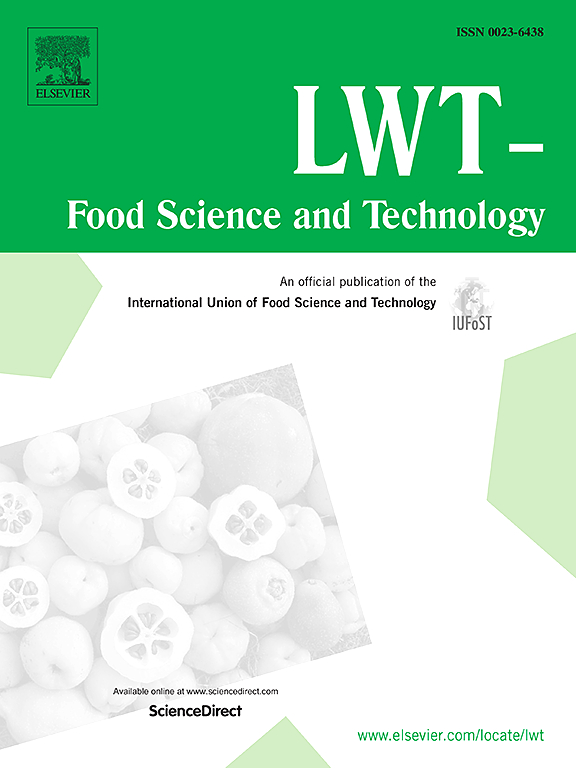用不同方法水解植物蛋白的理化和结构特性比较研究
IF 6
1区 农林科学
Q1 FOOD SCIENCE & TECHNOLOGY
引用次数: 0
摘要
本研究使用胰蛋白酶对大豆分离蛋白(SPI)、香附蛋白(CEP)、小麦面筋蛋白(WGP)和亚麻籽蛋白(FP)进行不同程度的水解,比较了四种植物蛋白及其酶水解物的结构和理化性质。结果表明,SPI 的表面疏水性会随着水解而上升,而 CEP 则会下降。此外,随着水解的进行,四种植物蛋白的必需氨基酸含量和持油能力都有所提高。水解度为 20% 的 CEP 达到了最佳持油能力,为 10.2 克/克。SPI 表现出更高的发泡能力。随着水解度的增加,四种蛋白质的泡沫稳定性也各不相同。水解度为 10%的 CEP 的乳化活性指数最高,达到 60 m2/g。此外,随着水解度的增加,CEP 水解产物的乳化稳定性指数也明显提高。根据 DPPH 分析,CEP 及其酶水解物都具有最高的自由基清除率。这些研究结果为在食品加工再加工过程中使用和改造植物蛋白水解物提供了理论依据和经验证据,使其成为一种前景广阔、环境可持续的植物源肽来源。本文章由计算机程序翻译,如有差异,请以英文原文为准。
Comparative study of physicochemical and structural properties of plant proteins hydrolyzed by different
This study used trypsin to hydrolyze soybean protein isolate (SPI), Cyperus esculentus protein (CEP), Wheat gluten protein (WGP), and flaxseed protein (FP) to varying extents, comparing the structure and physicochemical properties of four plant proteins as well as their enzymatic hydrolysates. Results indicate SPI's surface hydrophobicity rises with hydrolysis, whereas CEP's decreases. Additionally, all four plant proteins exhibit improved essential amino acid content and oil-holding capacity as hydrolysis progresses. The CEP with a 20% degree of hydrolysis achieved the optimal oil holding capacity, reaching 10.2 g/g. SPI demonstrated superior foam capacity. As the degree of hydrolysis increased, foam stability varied among the four proteins. The CEP hydrolyzed to 10% exhibited the highest emulsifying activity index, achiving a value of 60 m2/g. Additionally, the emulsifying stability index of CEP hydrolysates significantly improved as the degree of hydrolysis increased. According to the DPPH• assay, both CEP and their enzymatic hydrolysate had the highest free radical scavenging rate. These findings provided a theoretical basis and empirical evidence for the use and adaptation of plant protein hydrolysates as a promising and environmentally sustainable source of plant-derived peptides in food processing reaprocessing.
求助全文
通过发布文献求助,成功后即可免费获取论文全文。
去求助
来源期刊

LWT - Food Science and Technology
工程技术-食品科技
CiteScore
11.80
自引率
6.70%
发文量
1724
审稿时长
65 days
期刊介绍:
LWT - Food Science and Technology is an international journal that publishes innovative papers in the fields of food chemistry, biochemistry, microbiology, technology and nutrition. The work described should be innovative either in the approach or in the methods used. The significance of the results either for the science community or for the food industry must also be specified. Contributions written in English are welcomed in the form of review articles, short reviews, research papers, and research notes. Papers featuring animal trials and cell cultures are outside the scope of the journal and will not be considered for publication.
 求助内容:
求助内容: 应助结果提醒方式:
应助结果提醒方式:


